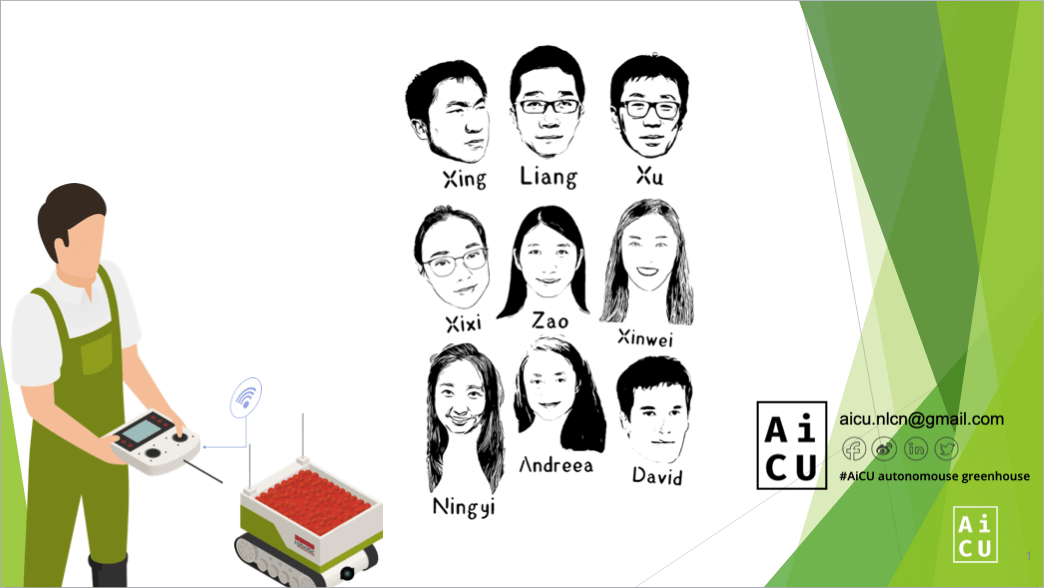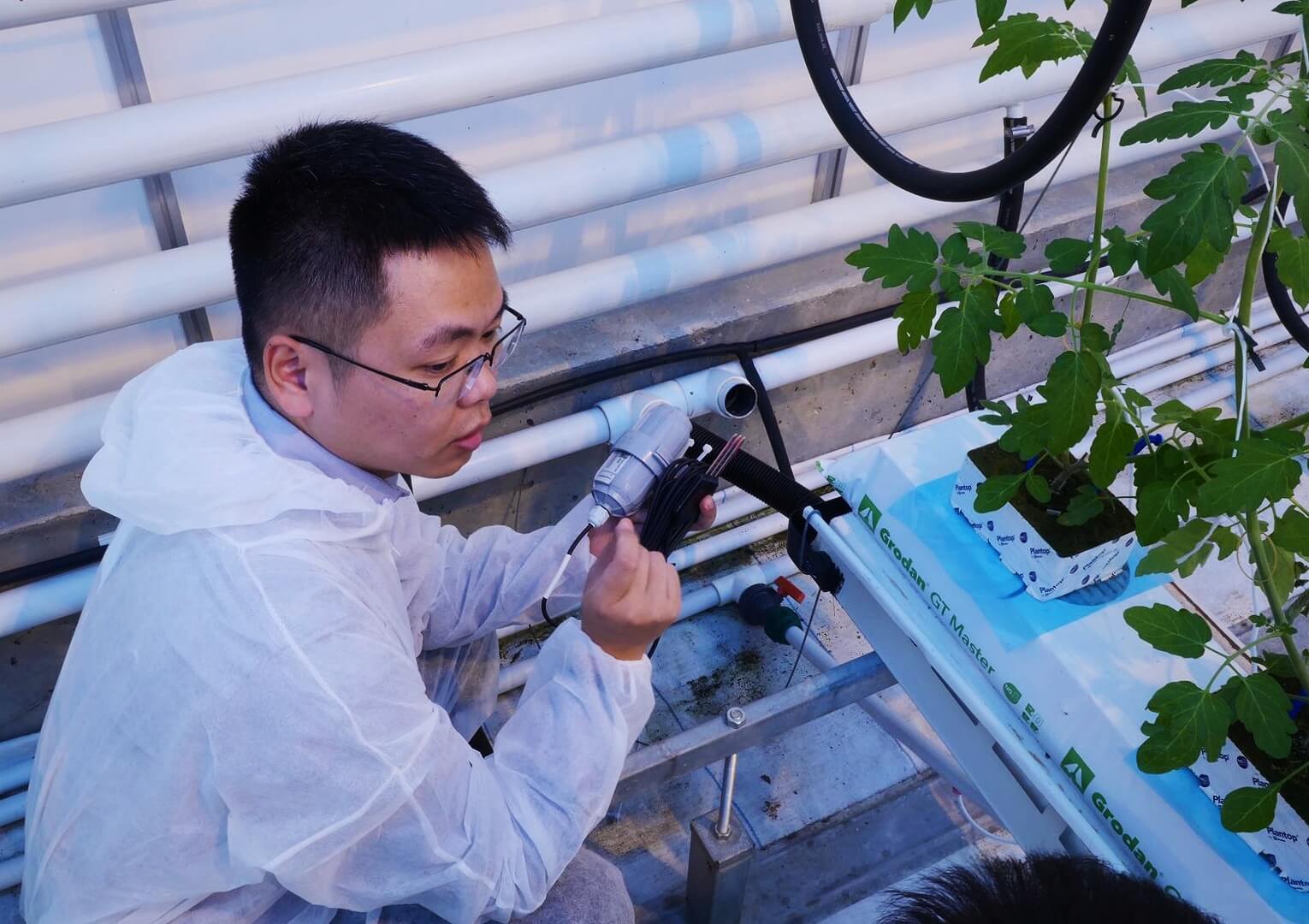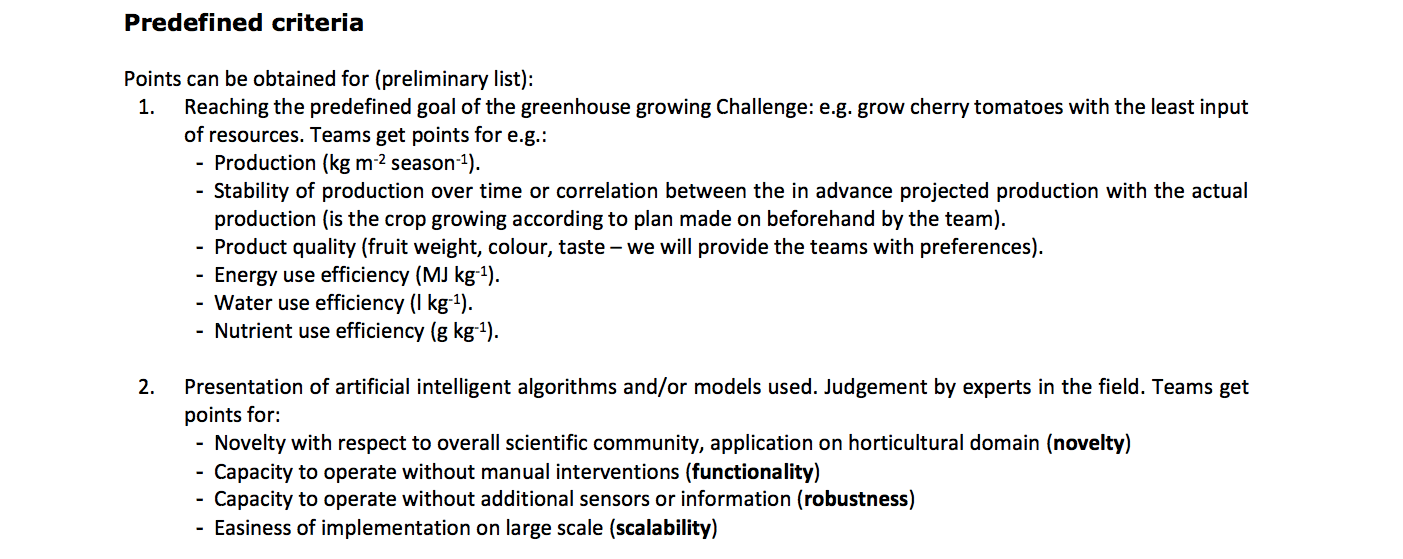Cherry Tomato Plantation with SenseCAP LoRaWAN: Smart Farming at Greenhouse for SDGs in the Netherlands
By Ye Seong SHIN 4 years agoAutonomous Greenhouse Challenge Project illustrates a case on AI and IoT-enabled cherry tomato production at a greenhouse enabled by Seeed’s SenseCAP LoRaWAN sensors and gateway. Thereby, this Project can contribute to technological innovation of the traditional agriculture sector, help cultivate sustainable food produce by lowering negative environmental impacts, and enhance the UN’s SDGs 2, 1, 8, 9, 12, 13 and 17.
Project Name: Autonomous Greenhouse Challenge Project
Deployment Location: Bleiswijk, The Netherlands
Targeted Industry Type: Greenhouse Farming
Project Partner(s): 
According to the Food and Agriculture Organization (FAO) of the UN, the world’s population will reach 9.1 billion by 2050, so global food supply must increase by 70% to meet the future demand (FAO, n.d.). As there has been a continuous decline in arable lands in the past decades due to human-made disasters and climate change, it is utmostly important for us to produce food more sustainably and efficiently. One of such methods is growing food inside greenhouses, as quoted by WUR: “Production volumes in greenhouses are typically up to 10 times higher than in the open field. At the same time, greenhouse production uses much less water compared to open fields.”
Similarly, the UN recognized the potential of greenhouse farming for generating stable income for farmers in the countryside (UNODC, n.d.), the World Economic Forum (WEF) also shared increasing urban farming trends amid the COVID-19 (Chandran, 2020). Indeed, we, as individuals, organizations, and enterprises, need to be prepared for the changing world affected by various force-majeure situations. By making modern techniques and systems such as AI and IoT more accessible, one of the most traditional industries like agriculture, can be transformed. Whether it is outdoor farming, tea growing on high mountains, fruit and vegetable cultivation, or any other categories of husbandry, technology can play a role in increasing efficiency, decreasing resource inputs, and incorporating sustainability to protect our environment, people, and the planet.
What’s the Challenge?
How to produce cherry tomatoes in a greenhouse with higher quality using less resources?
What’s the Project About?
In 2020, AiCU, one of our partners (Figure 1), won 2nd place at an event called “Autonomous Greenhouse Challenge September 2019 – June 2020” in Bleiswijk, the Netherlands. This event was aimed at inviting computer scientists and horticulture experts to challenge themselves, cutting-edge technologies, and manual greenhouse production, towards making a fully autonomous greenhouse operation possible. The event was jointly organized by Wageningen University & Research (WUR) and Tencent, with the goal of finding the best intelligent planting solution of cherry tomatoes, remote control of greenhouse crop production, and the best net profit optimization strategies in an autonomous greenhouse via deploying AI algorithms and sensors.

Figure 1. AiCU Team of Autonomous Greenhouse Challenge Project
WUR is an academic partnership between Wageningen University and the Wageningen Research Foundation in the Netherlands. It is dedicated to healthy food and sustainable living environment research for government agencies and the business sector. Through incorporating academic research, real-life applications, innovative ideas, and diverse technology deployment, WUR creates scientific breakthroughs in the food and agriculture industry. WUR’s core values include society and wellbeing, natural resources and living environment, and bio-based food production, while emphasizing sustainability and corporate social responsibility (CSR) values.
Tencent is a world-leading Chinese IT company, specializing in innovative product development and services to upgrade people’s quality of living globally through their communication APPs, video games, high-quality digital contents, FinTech, cloud computing, and so on. Ever since its foundation in 1998, Tencent has been dedicated to using its “technology for good”.
Since 2018, WUR and Tencent have been partnering to organize challenge-based events to inspire the adoption of AI and IoT in cultivating food produce with less inputs of resources. In 2019, our IIoT product, the SenseCAP series, has been deployed by AiCU Team to monitor environmental data within the greenhouse, where cherry tomatoes are cultivated during the 6 months-long period of the Autonomous Greenhouse Challenge Project (Figure 2).

Figure 2. AiCU Team Deploying Seeed’s SenseCAP Products
During the Autonomous Greenhouse International Challenge Project, WUR provided all the 5 teams with the same facilities and equipment, including greenhouse compartments, cherry tomato “Axiany” seedlings, substrates, lightings, advanced greenhouse simulators, some basic sensors, and the like. On the basis of these fundamental gadgets, each team was able to add extra sensors and cameras as needed. For this Project, data collected by the sensors are crucial to reflect the inner condition of the greenhouse, and precise control of the parameters can determine the growing status of the plants. By combining data with their own ICTs and machine learning algorithms, each team independently made decisions on the environmental settings of the greenhouse, such as lighting, temperature, humidity, CO2 concentration, nutrients, irrigation patterns, ventilation periods, etc. All the decisions made by the teams will determine their inputs and outputs, which would ultimately determine who would win the Challenge, based on what the Challenge Coordinator, Dr. Silke Hemming, describes as the 5 standards: “high quality, high yield, low-energy consumption, automation, and technology transferability” (Autonomous Greenhouses, 2020) (Figure 3).

Figure 3. Grading Criteria of the Challenge (Autonomous Greenhouses, 2019)
As for the AiCU team, their professional expertise lies within crop modeling, plant physiology, electronic engineering, AI, and machine learning. Such a multidisciplinary background enables them to make the best use of data collected from the SenseCAP sensors to make decisions from various perspectives. Among the many parameters, the following data – soil moisture (VWC), soil temperature, electrical conductivity (EC), photosynthetically active radiation (PAR) – is collected and monitored by SenseCAP LoRaWAN sensors and gateways (Figure 4).

Figure 4. System Deployment Diagram of Autonomous Greenhouse Challenge Project
The following SenseCAP-enabled IIoT devices were deployed at the autonomous greenhouse:
- SenseCAP Wireless Soil Temperature, VWC & EC Sensor – LoRaWAN
- SenseCAP Outdoor Gateway – LoRaWAN
- SenseCAP Wireless PAR Sensor – LoRaWAN
During the 6 months of this challenge competition, the AiCU team skillfully built their own algorithms and models based on the data feed from the sensors. Thus, optimal decisions were made in controlling conditions of the greenhouse (Figure 5).

Figure 5. Deployed SenseCAP Sensors and Gateway at the Greenhouse
When talking about the role of sensors, Liang Li, the Chief Programmer of AiCU team described them as:
“Seeed SenseCap sensors provide excellent real-time measurement accuracy, as well as easy installation in built-up greenhouses, thanks to its battery-powered wireless operation. The API allows us to integrate the sensors smoothly in our own software system. It was a good experience to work with Seeed SenseCap, and we’re looking forward to deploying it in more competitions and production greenhouses.”

Figure 6. AI-Grown Cherry Tomatoes at the Autonomous Greenhouse
(Autonomous Greenhouses, 2020)
As a result of this Challenge, we are finally able to see the value of smart agricultural decision-making, automated greenhouse control technologies, smart farming, and their potential to alleviate farmers’ and food producers’ burdens in the future (Figure 6).
Which SDGs Are Relevant?
Out of the UN’s 17 SDGs, Autonomous Greenhouse Challenge Project can primarily contribute to 7 SDGs (Figure 7):

Figure 7. Significant SDGs for Autonomous Greenhouse Challenge Project (UN, 2016)
By diving deeper into these SDGs’ Targets, we can understand that this Project can directly or indirectly affect many layers of sustainable development:
- Augment agricultural productivity and small-scale food producers (Target 2.3)
- Safeguard sustainable food production system through adopting resilient and adaptive agriculture practices (Target 2.4)
- Build resilience of underserved population in vulnerable situations affected by climate change, socio-economic and environmental events (Target 1.5)
- Enhance economic productivity by diversifying, and technologically advancing innovations on labor-intensive sectors (Target 8.2)
- Facilitate inclusive and sustainable industrialization through promoting resource-efficiency and eco-friendly technologies (Targets 9.2 & 9.4)
- Support scientific and technological capacity building for sustainable production (Target 12.A)
- Promote adaptive capacity and resilience in adverse environmental disasters by including climate change measures into strategies and plans (Targets 13.1 & 13.2)
- Expand global multi-stakeholder partnership for sustainable development, such as public-private and civil society partnerships (Targets 17.16 & 17.17)
To conclude, although there is still a long way to go before AI can be widely accessible for every farmer in the agriculture sector, the Autonomous Greenhouse Challenge Project has provided us insights and inspirations about how AI and IoT technology can empower the industry to achieve more efficient sustainable growth with decreased resource inputs. Now, more than ever, we are looking forward to collaborating on industrial transformation towards sustainable production with you, system integrators, technical partners, agricultural experts, and many more. Contact us sooner than later!
About Author
Ye Seong SHIN
Sustainability and CSR Manager at Seeed Studio
。
Jointly organize/participate in multi-stakeholder projects/platforms/events/webinars/workshops/hackathons/etc. to accelerate SDGs with local communities and open tech anywhere in the world by connecting with Ye Seong SHIN today on LinkedIn.
。
Seeed Studio is the IoT and AI solution provider for all types of traditional industries’ sustainable digitalization. Since its establishment in 2008, Seeed Studio’s technological products and customization services are used for smart agriculture, smart cities, smart environmental monitoring, smart animal farming, smart aquaculture, meteorological monitoring, STEAM education, and all types of emerging scenarios enabled by the Industry 4.0. With the company’s mission to “Empower Everyone to Achieve Their Digital Transformation Goals” (which shares similar values with SDGs’ Motto of “Leave No One Behind”), Seeed Studio is devoted to using open source technologies for accelerating SDGs with multi-stakeholders from UN agencies, academia, companies, CSOs, governments, public/private organizations, and so on. This is why, Seeed Studio also founded “Chaihuo Maker Space”, and started China’s first Maker Movement by annually organizing “Maker Faire Shenzhen”.

